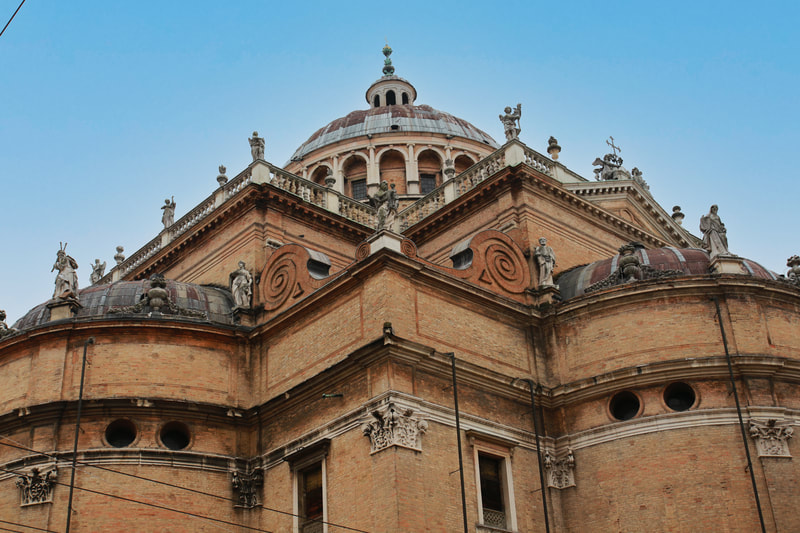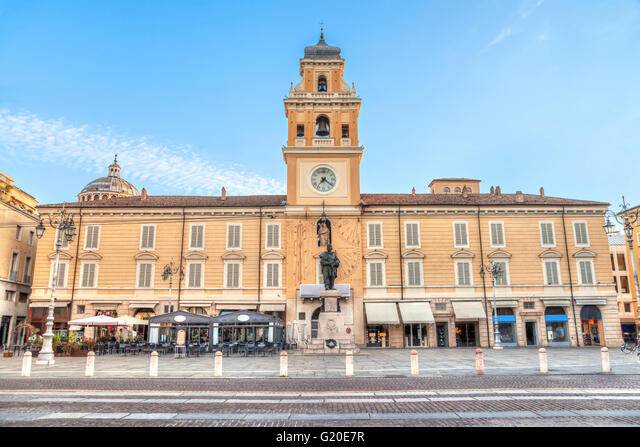Parma
Parma is a historic city in northern Italy, located in the southern part of the Po Valley, on the Parma River (right tributary of the Po). Its beginnings date back to ancient times, when the Etruscans founded one of their settlements there.
The heart of Parma is the small Piazza Duomo with the majestic medieval Romanesque Cathedral of the Assumption of the Blessed Virgin Mary (Cattedrale di Santa Maria Assunta). In the immediate vicinity of the cathedral there is a high (four-story) octagonal baptistery. Other important monuments of Parma include: the 16th-century Palazzo della Pilotta (currently the seat of the Academy of Fine Arts and the Archaeological Museum), the baroque Farnese Theatre, the church of St. John the Evangelist, the 13th-century Capitano del Popolo Palace, the grand Ducal Palace built on the site of the former Sforza family castle, the 16th-century Basilica di Santa Maria della Steccata, the 13th-century Governatore Palace and the citadel built on the order of Duke Alessandro Farnese in the 16th century near the old city walls .
Parma has a thriving economy and the food sector is very developed. For example, Barilla, which is based in the city. Chiesi Farmaceutici in the pharmaceutical industry and the European Food Safety Authority, which is also based in Parma.
The fertile soils around the Po river (and its tributaries) and the special climate where the soft and warm sea air mixes with the mountain air have resulted in two of Parma's main culinary exports - the ham known as Prosciutto di Parma and Parmigiano Reggiano cheese (commonly known as Parmesan cheese). ).
Parma railway station is served by regional trains as well as Trenord (connections to and from Brescia and Milan) and Trenitalia (connections to and from La Spezia). Many trains stop at the station, including Intercity, Eurostar City and Frecciarossa Milan-Rome.
The heart of Parma is the small Piazza Duomo with the majestic medieval Romanesque Cathedral of the Assumption of the Blessed Virgin Mary (Cattedrale di Santa Maria Assunta). In the immediate vicinity of the cathedral there is a high (four-story) octagonal baptistery. Other important monuments of Parma include: the 16th-century Palazzo della Pilotta (currently the seat of the Academy of Fine Arts and the Archaeological Museum), the baroque Farnese Theatre, the church of St. John the Evangelist, the 13th-century Capitano del Popolo Palace, the grand Ducal Palace built on the site of the former Sforza family castle, the 16th-century Basilica di Santa Maria della Steccata, the 13th-century Governatore Palace and the citadel built on the order of Duke Alessandro Farnese in the 16th century near the old city walls .
Parma has a thriving economy and the food sector is very developed. For example, Barilla, which is based in the city. Chiesi Farmaceutici in the pharmaceutical industry and the European Food Safety Authority, which is also based in Parma.
The fertile soils around the Po river (and its tributaries) and the special climate where the soft and warm sea air mixes with the mountain air have resulted in two of Parma's main culinary exports - the ham known as Prosciutto di Parma and Parmigiano Reggiano cheese (commonly known as Parmesan cheese). ).
Parma railway station is served by regional trains as well as Trenord (connections to and from Brescia and Milan) and Trenitalia (connections to and from La Spezia). Many trains stop at the station, including Intercity, Eurostar City and Frecciarossa Milan-Rome.

 English
English Italiano
Italiano





